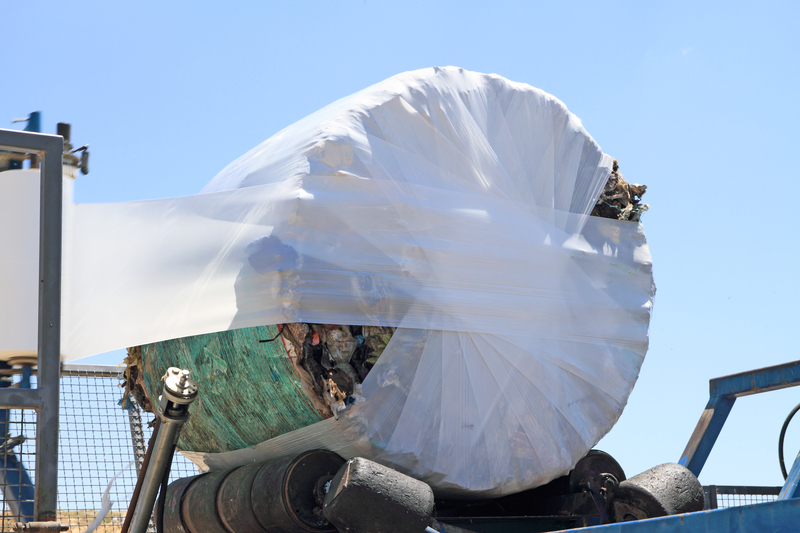Recycling Metals: A Path to a Sustainable Future
In an era where environmental sustainability stands at the forefront of global discussions, the process of metal recycling emerges as a compelling solution. Our reliance on metals is undeniable, embedded in everything from the vehicles we drive to the phones we use. But the future lies in how we manage these resources responsibly. Recycling metals is more than just an environmental trend; it's an essential practice for our planet's health and prosperity.
The Importance of Metal Recycling
Metal recycling is crucial for numerous reasons. Firstly, it conserves natural resources. Metals, such as iron, aluminum, and copper, are non-renewable resources, meaning once they're extracted, they do not regenerate. Recycling metals reduces the need for extracting raw materials, thus preserving these valuable resources for future generations.
Secondly, recycling reduces energy consumption. The manufacturing of new metal products from raw material requires significantly more energy than producing metal goods from recycled materials. For instance, recycling aluminum can save up to 95% of the energy required to produce the metal from bauxite ore.
Environmental and Economic Benefits
Recycling metals not only benefits the environment but also provides economic advantages. Environmentally, recycling minimizes pollution. The metal manufacturing process emits a substantial amount of greenhouse gases, which contribute to climate change. Recycling drastically cuts down these emissions by utilizing already processed materials.
- Reduces Landfill Waste: By recycling metals, we minimize the waste that ends up in landfills, thus reducing land pollution and the toxic runoffs that can enter our water systems.
- Conserves Biodiversity: Lower extraction demands mean less landscape disruption, preserving natural habitats for countless species.
Economically, the metal recycling industry generates significant employment opportunities. The sector has created jobs in sorting, refining, and redistributing materials. Moreover, it reduces costs for industries since recycled metals are typically cheaper than raw materials, enhancing profitability and competitiveness.
Key Metals in Recycling
Certain metals play a significant role in the recycling landscape. Aluminum, for instance, is extensively recycled due to its wide usage in consumer goods and its high energy saving potential. Steel, another highly recycled metal, is the most recycled material globally, often used in construction and manufacturing.
Copper is also a focal point in recycling efforts. Known for its electrical conductivity, copper is vital for electronics and is, therefore, a prime recycling target. The recycling of precious metals, such as gold and silver, from electronic waste, is growing, showcasing the endless potential of recycling technologies.
The Recycling Process
Understanding the recycling process is crucial to appreciating its benefits. The journey begins with the collection of scrap metal, sourced from households, industries, and demolition sites. Once collected, these metals are sorted based on type and quality.
- Sorting: The sorting process often involves the use of magnetic systems to separate ferrous from non-ferrous metals.
- Processing: After sorting, metals are shredded or compressed. Shredding facilitates the melting process since smaller pieces melt faster, consuming less energy.
- Melting: Each type of metal is melted in a furnace specific to the material being processed. The energy used is largely lesser than what's required for new material production.
- Purification: The melted metals are purified to remove contaminants, ensuring the final output is of high quality.
- Solidifying: The molten metal is cooled and solidified in specific molds, forming ingots or rods, which can then be manufactured into new products.
Challenges in Metal Recycling
Despite its benefits, metal recycling faces significant challenges. One major issue is contamination, where non-recyclable materials are mixed with recyclables, hindering the process efficiency. Furthermore, the fluctuating market prices of raw metals can influence the viability of recycling operations, making them less economically attractive during low-price periods.
Infrastructure and technology limitations in developing regions also pose hurdles. Many countries lack the systems needed to efficiently process and recycle metals, leading to economic dependency on raw material importation.
The Future of Metal Recycling
The future of metal recycling is promising, driven by advancements in technology and global initiatives towards sustainability. Robotics and AI are becoming integral in sorting and processing, enhancing the efficiency and capacity of recycling facilities. Moreover, increased awareness and legislative frameworks are encouraging industries and consumers alike to prioritize recycling.
Furthermore, sustainable development goals and government regulations are pushing industries toward adopting circular economy models, within which recycling plays a pivotal role. This focuses on designing products with their end-of-life point in mind, ensuring that materials can be easily reused.
Conclusion
In conclusion, recycling metals is an indispensable path towards a sustainable future. By reducing energy consumption, conserving natural resources, and minimizing environmental impact, metal recycling presents a pragmatic approach to addressing the pressing issues of resource depletion and climate change. With continued innovation and societal commitment, recycling metals can lead us to a more sustainable and prosperous world. Embracing these practices not only fosters environmental stewardship but also economic development, paving the way for future generations to thrive.

